Places to visit in Kenya
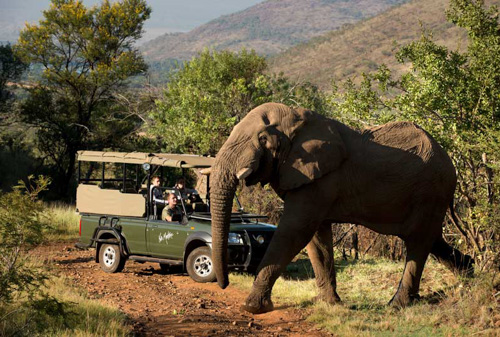
Jambo and welcome to East Africa! There are many reasons for a trip to Kenya: Hospitable, warm people, the interesting eventful history, the legendary Masai Mara, a perfect for a safari to see wild animals and of course Africa's "Big Five".
Kenya impresses with green mountain rainforests as well as wide, hot savannahs, national parks and reserves and the tropical coast at the Indian Ocean with dreamlike, miles long sandy beaches. In addition, breathtaking mountain landscapes such as the 5199 m high Mount Kenya or the East African Rift Valley with numerous lakes mesmerizes every visitor.
On top of that, Kenya attracts with one of the most spectacular natural spectacles worldwide: The great migration, when millions of wildebeests and zebras migrate through the Masai Mara every year following the rain. As a trekking and safari destination, the country is hard to beat and offers a variety of possibilities for attractive travel combinations, e.g. with beach holidays on the coast, on Lamu or Funzi Island.
We have reviewed our favorite Kenyan destinations for you.
Here are some of the top destinations.
-
Lake Naivasha
-
Hell's gate
-
Malindi
-
Lamu Island
-
Mombasa

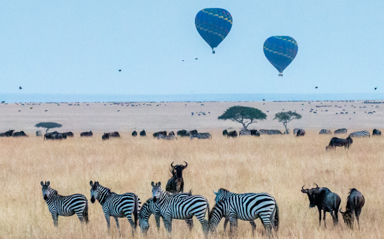
Maasai Mara
The Masai Mara forms an important ecosystem, the Reserve is known for its immense animal wealth, especially cats of prey, the great migration of wildebeest and the proud nomadic people of the Masai.
The Maasai Mara is one of the most popular and attractive national parks in the world. The term "mara" means "spotted" in the Masai language. This exactly describes the landscape where acacias and bushes stand out like small dots in the open savannah. Some rivers, like the Mara River and Talek River, flow through the wide plains.
In the Masai Mara, the conditions are perfect for observing the Big Five (elephant, lion, leopard, rhino and buffalo). But also other predators such as cheetahs, hyenas and jackals as well as herd animals like zebras and many antelope species can be found here in large numbers. Numerous hippos and crocodiles live on and in rivers. Among the most famous representatives of the birds are the ostrich, vulture and crown crane.
Because it is so popular, consider booking your safari in a Maasai Mara Private Game Reserve, this way you can experience the safari of a lifetime without the hustle and bustle of other vehicles.
If your budget does not allow for this sort of grandeur, you need not worry, even with a few other vehicles in sight, the Mara is magical. It is also one of the cheapest places in Africa to go on safari. With us, you can book an affordable group tour. We recommend combining your Maasai Mara safari with other destinations such as Amboseli and Diani Beach or Lake Nakuru and Lake Navaisha.
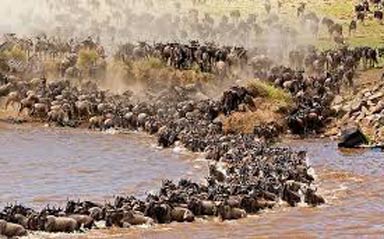

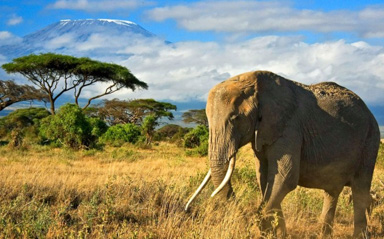
Amboseli
Often you can see elephants wading through the densely overgrown swamps and only half of them can be seen. Other animals that can be seen are wildebeest, buffalo, zebra and gazelles. Predators are less represented. But with a little luck, you can see lions, cheetahs, hyenas and jackals.
In between the Maasai Mara and the route to Mombasa, the Amboseli is in a perfect location. From here, you can even take the high-speed train to Mombasa to finish your holiday on Diani Beach at a luxurious resort.
For ornithologists the region is a true paradise: numerous bird species are at home here.
A fascinating view is offered to the visitors of the Amboseli. The mighty Kilimanjaro with its snow-covered peak towers above the plains of the reserve. The national park consists of several landscape forms. Lake Amboseli, which is a dry area most of the time, occupies one-third of the area. Only after heavy rainfalls, the lake fills with water.
Along with the impressive view on Mount Kilimanjaro. The Kilimanjaro is not even in Kenya and yet the Kenyan's have the best view on it! The greatest thing about Amboseli is its massive elephant population.

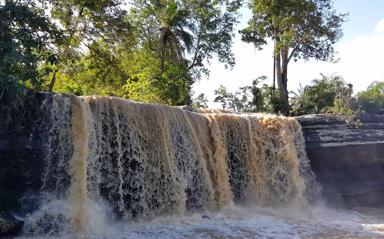
Shimba Hills
This hidden little gem will surprise you. The Shimba Hills Reserve is a coastal jungle and therefore a special feature compared to the other national parks of Kenya, where vast savannah plains predominate. The landscape is characterized by densely overgrown hills, which rise 150 to 450 meters above sea level. When visibility is good, you can overlook the south coast of Kenya from various vantage points and see the sea.
The Shimba Hills are the perfect weekend escape from Mombasa. Lush tropic vegetation, interesting wildlife, and a glamorous resort make for the perfect weekend away. Wander around the reserve and discover coastal rainforests and waterfalls.
Lush green meadows criss-cross the region, where the native animals can best be observed. A peculiarity of the Shimba Hills is the rare sable antelopes, which in Kenya can only be found in this reserve. The forests are home to monkeys, warthogs, giraffes, elephants, waterbucks and kaffir buffaloes as well as many species of birds such as eagles, falcons, bee-eaters, woodpeckers and kingfishers.
Watch the sunset as you plunge into an infinity pool. Shimba Hills is a magical place that most people have never even heard about.

The Tsavo
The Tsavo is massive, spectacular and unlike any other national park in Kenya. You also have the opportunity to choose between the Tsavo East and the Tsavo West. If you want to experience the true wilderness of East Africa, you should visit the Tsavo National Park.
The two parts Tsavo East and Tsavo West together with the adjacent Chyulu Hills National Park form one of the largest game reserves in Africa, with a breathtaking variety of landscape, nature and animals.
Even though they have the same name, the two parts of the national park are quite different: Tsavo West National Park offers a breathtaking landscape with mountains, lava formations as well as the famous Mzima springs and trumps, with a fantastic view up to Kilimajaro on clear days.
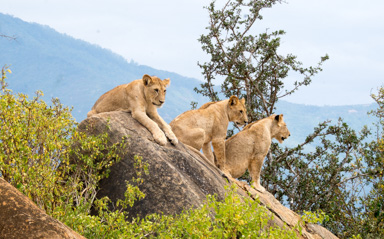
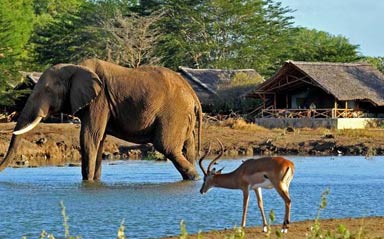
The West has, arguably, more varied wildlife and a greater change in scenery with the Mzima Springs and the Tsavo River. The Taita Hills with the salt lick pans is also in the West, bordering the East.
The East is almost twice as large as the western part, but much drier and semi-arid, which makes for great open plain game viewing. The vegetation is characterised by open, thorny bushland and semi-deserts as well as the volcanic Yatta Plateau, a lava field 300 kilometres long. On unforgettable safaris in the park, you can observe Africa's "Big Five" (lion, buffalo, leopard, elephant and rhino) as well as numerous other animal species.
This destination makes for an excellent weekend away from Mombasa.

Lamu Island
Lamu Island is a favorite among the rich and famous and European nobility. For over a thousand years, cultures from all corners of the world have met here and left their cultural and architectural traces. It's a well-kept secret even though Instagram is changing this, as more and more celebrities post pictures of the cute little donkeys walking up and down the very narrow streets of the island. Think Aladdin and think Lamu.
The island of Lamu is located close to the equator off the coast of Kenya in the Indian Ocean, just 100 to 800 metres from the African mainland. The island has preserved its fascinating cultural mix of a thousand years of Arab, Indian and African influences to this day. The historic old town of Lamu Town was declared a World Heritage Site by UNESCO in 2001.
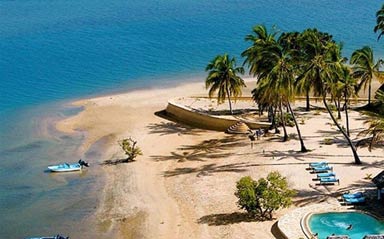

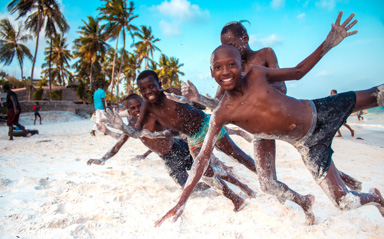
Together with its neighbouring islands Manda and Pate, Lamu Island forms the Lamu Archipelago. On Manda, there is a small airport, which is approached from Nairobi or Mombasa. Otherwise, Lamu can be reached from Mombasa in a rather difficult way by bus and then by ferry.
That’s how special this place is. As much as we love Mombasa for Diani Beach, we at Safarisource are even more crazy about the fairytale setting that is Lamu. Book with us as a separate package or ask us to include it in a safari itinerary.

-
Amboseli
-
Nairobi
-
Tsavo West
-
Mt. Kenya
-
Samburu
Kenya Wildlife

Impala

Lion

Buffalo

Elephant

Zebra

Jackal

Kudu

Guineafowl

Warthog

Cheetah

Rhinos

Ostrich

Leopard

Wildebeest

Crocodiles

Eland

Flamingo

Hippo

Gazelle

Vultures

Giraffe
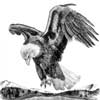
Eagles

Orix
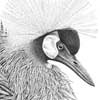
Cranes
Mammals You Will See in Kenya
Kenya has a whopping 390 species of mammals recorded. That’s a very long check list for your safari!Out of these, 4 mammals are critically endangered and 19 are endangered, meaning they could go extinct soon.
The endangered species list includes the black rhino, the hirola or hunter’s antelope, the Tana River mangabey and the Grevy’s Zebra. Over 10% of Kenyan land is protected as a national park or reserve, meaning there is plenty of space to work through that checklist. Some of the more special animals you can look for include the East African Oryx. Nothing is more entertaining than watching two male oryxes fight it out for a lady oryx. They will gallop around in elegant wide circles making funny noises.
Another highlight is the De Brazzas monkey. They are hard to find but their characteristic faces will never be forgotten. Another cutie is the black backed jackal. Although nocturnal, this cunning predator can be seen during the day. One of Kenya’s most iconic mammals is of course the elephant. You will most certainly get to experience these gentle giants on your safari, be it in the Amboseli, the Maasai Mara or the Tsavo.
Another graceful species to keep a look out for is the giraffe. Go to the Giraffe Center in Nairobi if you want to experience some of the extremely rare ones, like the Rothschilds Giraffe. Otherwise you will be pretty certain to spot the Masai Giraffe at one of the reserves or national parks. If you are lucky enough to see two giraffe mounting each other, check to see if they have any hair on their horns. If they don’t, they’re both male. The chance that you will see this and not a male and a female, is 90% high.
The Great Migration
The Great Migration is a continuous circling of millions of wildebeest and zebra, across the plains of the Serengeti and up into the Maasai Mara. This spectacle is in danger as Tanzania plans to build a highway across the Serengeti for the sake of what they consider human progress and getting to Mwanza a few hours quicker.
There is a lot of talk and little action so this highway may perhaps never come, or maybe Elon Musk can build a hyperloop instead. The Great Migration gets truly spectacular when the wildebeest, also known as gnus, try to cross the Mara River. When they do this you will see crocodiles gaping their mouths and attacking. You will also see cunning zebra letting the gnus go first into the water so that the zebra can then pass once the crocodiles have their mouths full with gnus.
Whilst you can watch the migration pretty much year round in Tanzania, you only get the chance once a year in Kenya. This is usually in June and July. Be aware that it can get crazy busy with tourists. If you have a generous budget then we recommend booking a Tanzanian safari with us, to watch the Great Migration. Watch the Great Migration in Kenya if you want to save money.
Reptiles
Reptiles are mainly found in the dry areas of Kenya. There are over 70 species of snakes, of which about 20% are dangerous poisonous. These include the Speikobra, the Boomslang, the Cape Cobra, the Black Mamba and the Puff adder. The latter is highly poisonous and requires special care. Snakes are more likely to be observed during the rainy season, as their dwellings in the ground fill with water and force them to come out.
Lizards are common throughout Kenia. The largest specimens are the Nile Lizards, which can grow up to 2 meters long. These skilful hunters are diurnal and stay close to the water. They are shy and not dangerous to humans.
Crocodiles are an endangered but dangerous species in Africa. These archaic creatures can grow up to 6 m long. They linger motionlessly in the water, only to grab their prey in a flash and immobilize it by jerky movements, pulling it under water.
Birds
Kenya is a great bird and wildlife photography destination and it is easy to understand why. In Kenya - especially in the national parks - live about 1,000 different bird species, which make up about 60% of all African bird species. These include:
Birds of prey - different eagles, vultures and owls... they belong to the robbers of the air!
Insectivores and fruit-eaters - small to medium-sized birds with straight or crooked beaks. We have discovered twenty different species in Kenya alone!
Ground birds - various species of small and larger birds that do not fly or fly only a little and live on the ground. Among these are the Frankoline, guinea fowls, bustards and of course the ostriches.
Water birds – Kenya has plenty of ocean and inland waters rich in fish. From the seagull to the cormorant, they are found in great numbers
Marine Life
The coast of Kenya, with its shallow sea and warm winds, is ideal for finding the so-called ''Big Game Fish''. The waters around Mombasa have a great abundance of fish, which is unique in the world. Every month big fish visit the coastal waters. In the months of August until the end of March the Black Marlin visits the coast. From August to November we find the Yellow Fin Tuna and the famous Sailfish. The Yellow Fin Tuna can reach a length of 2.4 m and a weight of 200 kg.
There are many dive sites in Kenya. The coast of Mombasa is protected by a reef. During your visit you should also dive in front of the reef and explore the underwater world. In Chale Island you can see huge whale sharks from time to time. The best time to see a manta ray is between December and February.
 Book Now!
Book Now!




